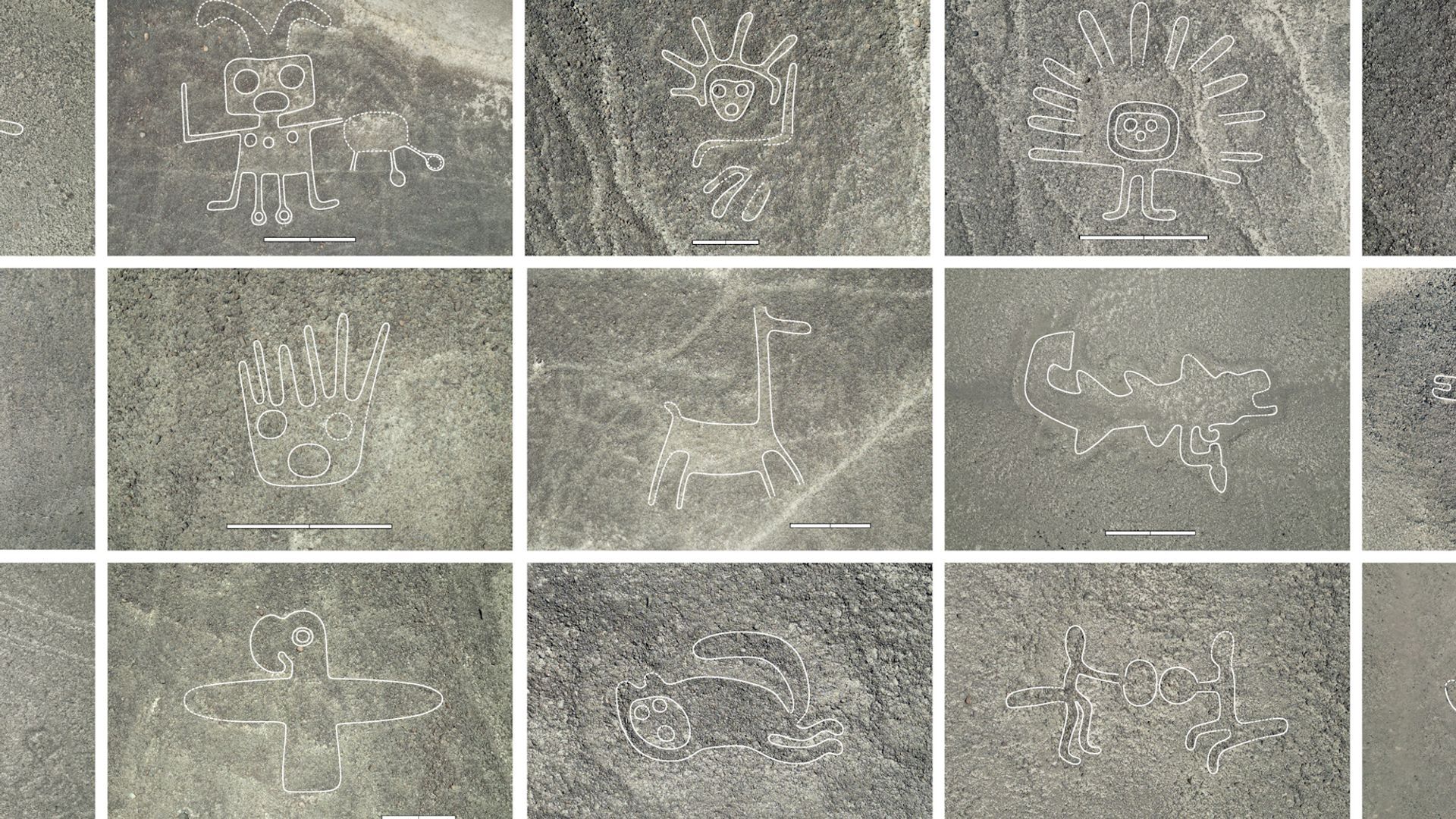
AI uncovers hundreds of new Nazca geoglyphs in breakthrough discovery
By Jack Aylmer (Energy Correspondent), Mathew Grisham (Digital Producer), Mirlie Larose (Producer), Ian Kennedy (Lead Video Editor)
For over a century, archaeologists have marveled at Peru’s ancient line drawings. Now, a breakthrough using new technology is rewriting what people thought they knew about these massive works of ancient art.
Media Landscape
See how news outlets across the political spectrum are covering this story. Learn moreBias Distribution
Left
Right
Untracked Bias
A team of scientists have used artificial intelligence to nearly double the number of known geoglyphs in just six months. By using AI, the team has identified more than 300 new figures, a process that would have taken decades if done manually.

Download the SAN app today to stay up-to-date with Unbiased. Straight Facts™.
Point phone camera here
Despite their size, many of these Nazca lines went unnoticed, even after their rediscovery in the 20th century. A cat-shaped geoglyph was found on a hillside just a few years ago, but with the help of AI, this new team has built on previous findings, discovering even more.
The AI system was specifically designed to detect smaller and harder-to-find figures by cleaning and analyzing geospatial data. It then divides the landscape into grids, and identifies potential patterns.
Once the AI flags possible locations, archaeologists step in to confirm the results. Despite limited data to train the new tool, it has so far been accurate.
Out of over 1,300 potential finds, the team confirmed 303 new figurative geoglyphs and 42 geometric ones. These geoglyphs, created between 200 B.C. and A.D. 500, depict everything from animals to human figures. Larger figures represent animals like birds and killer whales, while smaller glyphs show symbols near ancient trails.
Researchers believe this AI-driven approach could revolutionize archaeology, leading to even more discoveries of ancient civilizations around the world.
Jack Aylmer
FOR OVER A CENTURY, ARCHAEOLOGISTS HAVE MARVELED AT PERU’S ANCIENT LINE DRAWINGS, NOW, A BREAKTHROUGH APPROACH IS REWRITING WHAT WE THOUGHT WE KNEW ABOUT THESE MASSIVE WORKS OF ART.
A TEAM OF SCIENTISTS HAVE USED ARTIFICIAL INTELLIGENCE TO NEARLY DOUBLE THE NUMBER OF KNOWN GEOGLYPHS IN JUST SIX MONTHS.
BY USING AI, THE TEAM IDENTIFIED MORE THAN 300 NEW FIGURES, A PROCESS THAT WOULD HAVE TAKEN DECADES MANUALLY.
DESPITE THEIR SIZE, MANY OF THESE SO-CALLED ‘NAZCA LINES’ WENT UNNOTICED, EVEN AFTER THEIR REDISCOVERY IN THE 20TH CENTURY. A CAT-SHAPED GLYPH WAS FOUND ON A HILLSIDE JUST A FEW YEARS AGO. BUT WITH THE HELP OF AI, THIS NEW TEAM HAS BUILT ON THOSE EARLIER FINDINGS AND UNCOVERED EVEN MORE.
THE AI SYSTEM WAS SPECIFICALLY DESIGNED TO DETECT SMALLER AND HARD-TO-FIND FIGURES BY CLEANING AND ANALYZING GEOSPATIAL DATA, THEN DIVIDING THE LANDSCAPE INTO GRIDS TO IDENTIFY POTENTIAL PATTERNS.
ONCE THE AI FLAGS POSSIBLE LOCATIONS, ARCHAEOLOGISTS STEP IN TO CONFIRM THE RESULTS. AND DESPITE LIMITED DATA TO TRAIN THE AI, IT’S BEEN REMARKABLY ACCURATE.
OUT OF OVER 1-THOUSAND-300 POTENTIAL FINDS, THE TEAM CONFIRMED 303 NEW FIGURATIVE GEOGLYPHS AND 42 GEOMETRIC ONES.
THESE GEOGLYPHS, CREATED BETWEEN 200 BC AND 500 AD, DEPICT EVERYTHING FROM ANIMALS TO HUMAN FIGURES. LARGER ONES REPRESENT ANIMALS LIKE BIRDS AND KILLER WHALES, WHILE SMALLER, HARDER-TO-SPOT GLYPHS SHOW HUMAN FORMS AND OTHER SYMBOLS NEAR ANCIENT TRAILS.
RESEARCHERS BELIEVE THIS AI-DRIVEN APPROACH COULD REVOLUTIONIZE ARCHAEOLOGY, LEADING TO EVEN MORE DISCOVERIES OF ANCIENT CIVILIZATIONS AROUND THE WORLD.
I’M JACK AYLMER AND YOU CAN FIND MORE STORIES LIKE THIS ON OUR STRAIGHT ARROW NEWS APPS
Media Landscape
See how news outlets across the political spectrum are covering this story. Learn moreBias Distribution
Left
Right
Untracked Bias
Straight to your inbox.
By entering your email, you agree to the Terms & Conditions and acknowledge the Privacy Policy.
MOST POPULAR
-
 Getty Images
Getty Images
Illegal border crossing apprehensions plunge to 8,300 in February: Report
Watch 2:0613 hrs ago -
 Getty Images
Getty Images
Putin says he will facilitate negotiations between Trump, Iran: Report
Watch 3:0618 hrs ago -
 Getty Images
Getty Images
Melania Trump backs ‘Take It Down Act’ targeting AI deepfake, revenge porn
Watch 2:0019 hrs ago -
 Getty Images
Getty Images
FBI has turned over ‘truckloads’ of Epstein files: AG Bondi
Watch 1:04Yesterday




